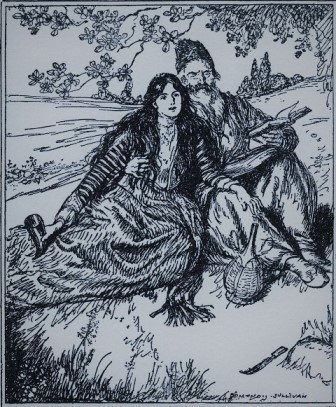

After World War II, reconstruction efforts were significantly delayed by two clever forgeries. In the 1930s, Iranian scholars, notably Mohammad-Ali Foroughi, attempted to reconstruct a core of authentic verses from scattered quotes by authors of the 13th and 14th centuries, ignoring the younger manuscript tradition. The extant manuscripts containing collections attributed to Omar are dated much too late to enable a reconstruction of a body of authentic verses.

Skeptical scholars point out that the entire tradition may be pseudepigraphic. The number of quatrains attributed to him in more recent collections varies from about 1,200 (according to Saeed Nafisi) to more than 2,000. : 92 : 434 Also, five quatrains assigned to Khayyam in somewhat later sources appear in Zahiri Samarqandi's Sindbad-Nameh (before 1160) without attribution. Parts of the Rubaiyat appear as incidental quotations from Omar in early works of biography and in anthologies. This view is reinforced by other medieval historians such as Shahrazuri (1201) and Al-Qifti (1255). The earliest reference to his having written poetry is found in his biography by al-Isfahani, written 43 years after his death. Khayyam was famous during his lifetime not as a poet but as an astronomer and mathematician. The authenticity of the poetry attributed to Omar Khayyam is highly uncertain. įitzGerald's work has been published in several hundred editions and has inspired similar translation efforts in English, Hindi and in many other languages. By the 1880s, the book was extremely popular throughout the English-speaking world, to the extent that numerous "Omar Khayyam clubs" were formed and there was a " fin de siècle cult of the Rubaiyat". FitzGerald had a third edition printed in 1872, which increased interest in the work in the United States. Rubáiyát of Omar Khayyám is the title that Edward FitzGerald gave to his 1859 translation from Persian to English of a selection of quatrains ( rubāʿiyāt) attributed to Omar Khayyam (1048–1131), dubbed "the Astronomer-Poet of Persia".Īlthough commercially unsuccessful at first, FitzGerald's work was popularised from 1861 onward by Whitley Stokes, and the work came to be greatly admired by the Pre-Raphaelites in England. A collection of postcards with paintings of the Rubaiyat of Omar Khayyam, by Indian artist M.


 0 kommentar(er)
0 kommentar(er)
